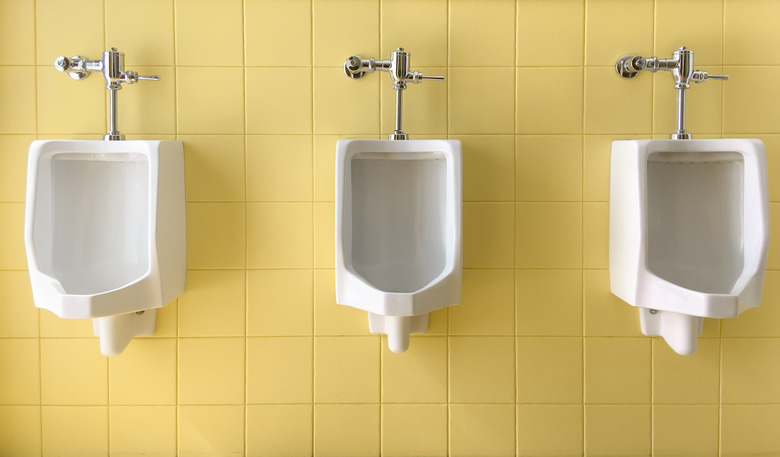How Sloan Flush Valves Work
We may receive a commission on purchases made from links.
If you went to elementary or high school in North America, you're no doubt familiar with Sloan flush valves, also known by the brand name "Flushometers." They are common in schools, public bathrooms and government offices, although they are slowly being phased out in many places in favor of motion-sensor flushing devices that use essentially the same technology.
Sloan Flushometers have been favored in public bathrooms for so long because they flush quickly using pressurized water and they reset more quickly than standard gravity-flush toilets with tanks. They seldom malfunction, but once you understand how they work, you'll also understand what might be wrong if one doesn't work the way it should.
Types of Sloan Flush Valves
Types of Sloan Flush Valves
Sloan manufactures two types of Flushometers: one with an internal diaphragm and one with an internal piston. They both rely on the water pressure of the water system to do their job, but if the pressure is lower than it should be, a piston-style valve is the recommended choice because the piston is more responsive. For most applications under normal circumstances, the diaphragm type is the better choice because it has fewer movable parts and functions better if the water contains minerals and other impurities.
How Sloan Flushometers Work
How Sloan Flushometers Work
Both types of valves have an inner chamber divided into an upper and lower section. The lower chamber is connected to the pressurized water system, and a pinhole in the diaphragm or piston allows water into the upper chamber to equalize the pressure between the two chambers and keep the valve closed. When you push the flush handle, it activates a relief valve that tilts the diaphragm or piston just enough to allow water to flow from the upper chamber to the lower one, and that allows pressurized water to displace the diaphragm or piston, and the pressurized water flows into the toilet bowl.
The water is under the same pressure as all the water in the plumbing system, and it flows at the same rate as it does from a faucet; the Sloan valve does not supply extra pressure. However, the pressure in the bowl increases because it has to get through the small apertures in the rim. When you release the flush handle, the diaphragm or piston resets, and water flows through the pinhole into the upper chamber, restoring equilibrium between the chambers and closing the valve, and it's ready for a new flush. This happens in a fraction of the time it takes for a toilet tank to refill.
Troubleshooting a Sloan Flush Valve
Troubleshooting a Sloan Flush Valve
The fitting that connects a Sloan valve to the plumbing has an exposed nut that opens and closes a control valve. If the flush valve doesn't work or if it's supplying too little water for a flush, it's often because this valve is closed. You can open it by turning the nut counterclockwise with an adjustable wrench. To fix most other problems, you usually have to disassemble the valve.
If the valve closes as soon as it opens or if the flush is too short and the control valve is open, the diaphragm or piston is usually at fault and may have to be tightened or replaced. If the flush is too long, it's usually because the relief valve is not seated properly, and once you have the valve cover off, it's a simple matter to reset it. Some problems are caused by low water pressure in the building's water supply or installation of a water-saving valve on a non-water-saving bowl. For these problems, it's best to call a plumber.
